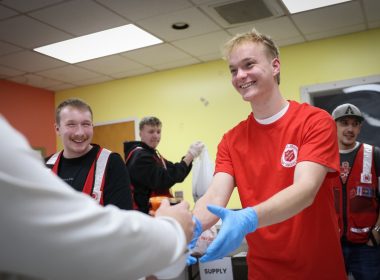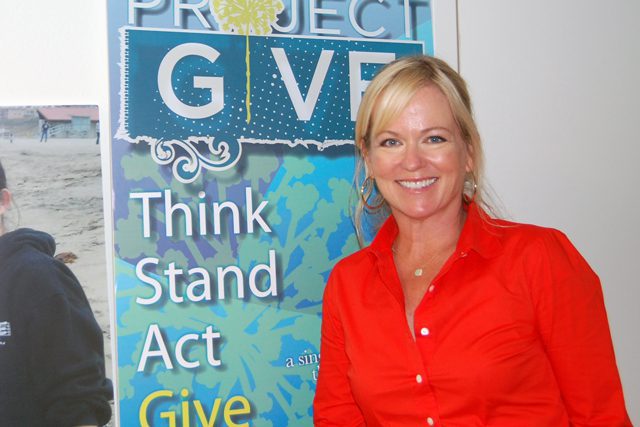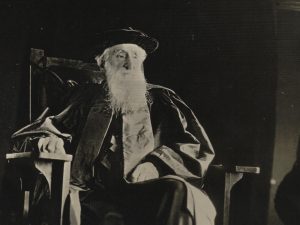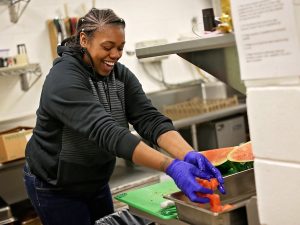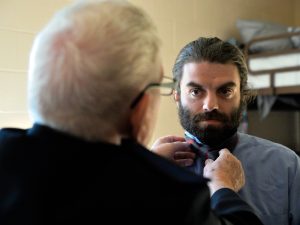Former Booth baby becomes Mother of the Year and starts her own nonprofit.
Dianne Callister received a tremendous shock from her parents at just 8 years old—she was adopted.
In 1964, a teenage girl gave birth to Callister at a Salvation Army Booth Home in East Los Angeles. Stigma surrounded teenage pregnancy during the 1960s so Booth Homes existed to be a safe shelter for young girls. At two months old, Callister was adopted and believes this upbringing helped cultivate a deeper meaning in her life.
She’s currently the UN representative for American Mothers and started Project Give, which educates and funds student-driven service for middle school students nationwide. In 2010, she was recognized as the National Mother of the Year. Caring met with Callister to learn more about her journey.
When did you first find out you were born at a Salvation Army Booth House?
I play the harp and I was volunteering for an organization that brought music to inner city kids. When they gave the address, something rang a bell. I went back to my birth certificate and realized that’s where I had been born. I ended up playing the harp on Mother’s Day at the same location that I had been born 48 years ago.
When I was done playing, one of the girls came over and started talking to me and I said to her, “You look like you’re due anytime.” She replied, “Well I’m just twice as unlucky I’m pregnant with twins.”
I said to her, “Do you want to know a secret? I know what you’re doing is really important and it matters. I know that because I was born here. What you’re doing is important to me.”
The look in her eyes changed and I think it was just hard for her to grasp that what she was doing could matter to another human being. It made me realize when we understand that what we’re doing matters it changes our perspective. I think that’s what The Salvation Army does—helping people understand that touching the life of one person matters. I will always be grateful to The Salvation Army for my chance here on earth.
Do you think knowing that helped shape your values?
Definitely because I’ve always had a strong faith in God and known that I had a purpose here—that I wasn’t an accident. I mean maybe my circumstances for coming here were accidental, but I think it makes you more purpose driven.
Is that part of what inspired you to start Project Give?
My daughter was working in Rwanda and the Congo with One Laptop per Child [a non-profit that gives laptops to children in developing countries] and she called me one day and said, “Mom, if I would have known how the rest of the world lived in middle school, it would have changed my whole life.”
I honestly couldn’t even sleep that night because I sat up thinking about those words. I thought if I could save one parent, one child—I was just thinking one. Turning one person into focusing on the greater good.
I woke up the next morning and I thought I’m just going to go to the local school and I’m going to say what if we give you $2,000. I went to the principal and I said I’ve got this idea. If I give you this money, can you set it aside and get a group of kids together—however you want to implement it. I had no idea if it was going to go anywhere and he said, ‘I think that’s a great idea.’
So the school receives the funds and the kids decide how they want to utilize it in their community?
Yeah, so the funds are all leveraged into some sort of social cause. In Hawaii they’re leveraging them in environmental work. In Boston they’ve done a lot of anti-bullying because that was a big issue there. In downtown Los Angeles they did a lot of feeding the homeless and helping families that were in dire situations.
Essentially it’s like paying it forward. Taking that money and doing something great with it for someone else?
Right! And it empowers them because they’re not just a kid anymore—they’re a kid with responsibility. It gives them a little taste of what its like to be a leader and what it’s like for someone to have enough faith in you that they’ve entrusted you with this money.
When did you decide to make it into a nonprofit?
Initially we just did it with a few schools and then it started growing. We started getting a lot of applications from different areas. It became so big I couldn’t fund it myself.
I hadn’t even officially formed it yet and I was at the local Staples picking up folders for our teachers. I walked in and there were all of these men in suits and I thought well that’s kind of strange. As I was collecting my folders, one of the men asked what my folders were for.
I told him they were for a service-learning program. He turned to his associates and said this is exactly the kind of program Staples needs to be sponsoring. I later found out he was the president of Staples.
Wow, that’s incredible.
Isn’t that amazing! I mean there are no accidents. They were our first sponsors. It was funny because at that time I knew nothing about sponsorship.
How many schools is Project Give involved in now?
We’ve operated in over 100 schools. Right now we’re trying to bring it back to Los Angeles because we’ve found that it really needs it. It’s great to get all the applications from different locations, but it really hasn’t strengthened one core area. So what we would like to do now is just focus on strengthening Los Angeles.
How can others help with this cause?
They can have schools apply, and I think partnerships would be amazing. Encourage people to take an interest in this age group, in middle school, and empower them to care about their community.
How are you able to juggle everything so well?
To be honest, I believe when you keep your priorities first and foremost God, your family and then everything else—and you try and just make a positive difference every day—you really are led. I don’t have any other way to describe it. You really are led by a higher power that helps you define your decisions. I’ve been fortunate to be able to tap into that in an effective way.

